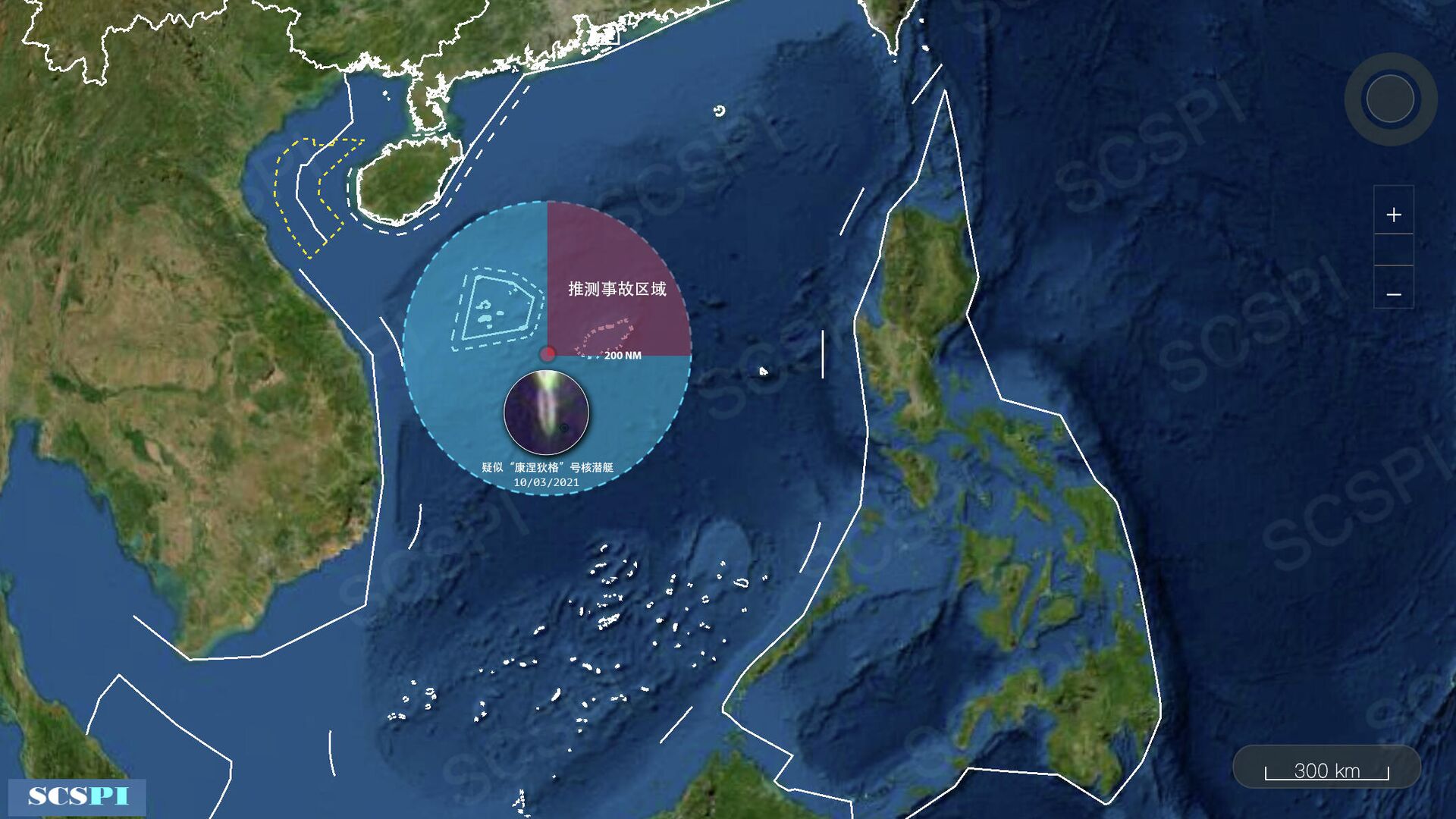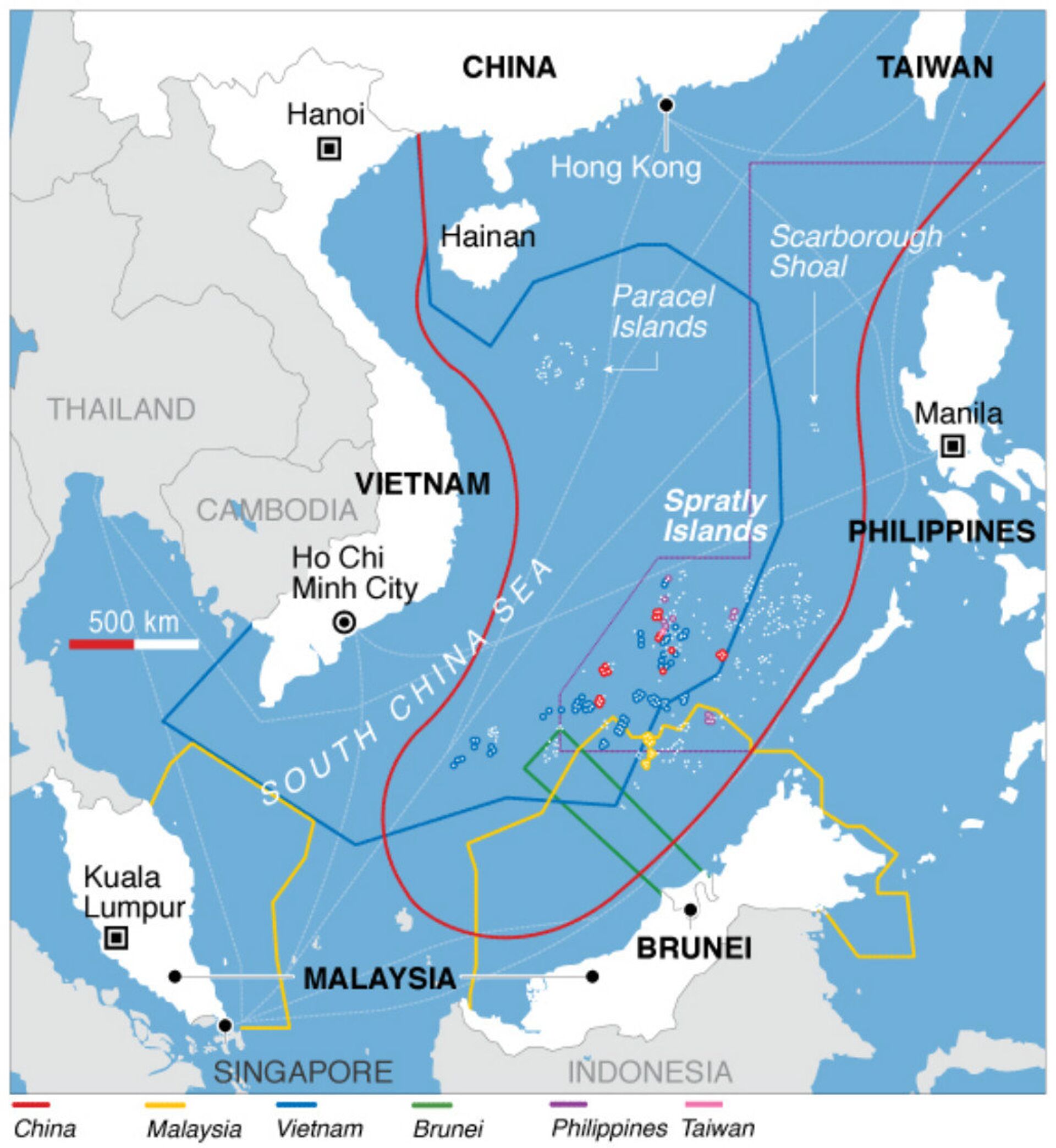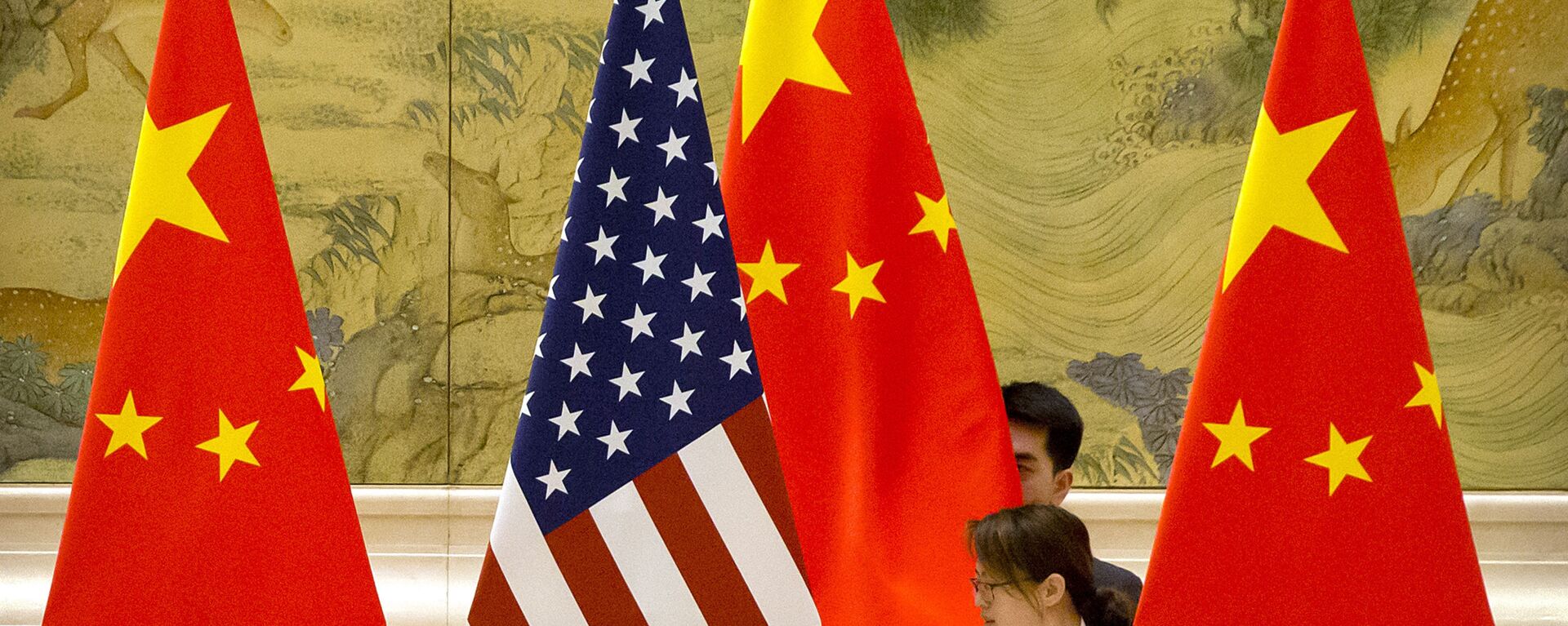Chinese Think Tank Triangulates Spot Where US Sub Likely Collided With Mystery Object
15:33 GMT 14.10.2021 (Updated: 16:36 GMT 14.10.2021)

© Photo : SCS Probing Initiative/twitter
Subscribe
Last Thursday, the US Pacific Fleet reported that 11 Navy seamen received minor to moderate injuries after their nuclear attack sub struck an unknown object while submerged and operating in international waters in the Indo-Pacific region on 2 October. US media later clarified that the incident took place in the highly sensitive South China Sea.
A Beijing-based think tank believes it’s honed in on the approximate area where the USS Connecticut bumped into a mystery object during operations in the South China Sea earlier this month.
Speaking to the Chinese language edition of the Global Times newspaper, Hu Bo, director of the South China Sea Strategic Situation Probing Initiative (SCSPI), said the think tank used satellite data to determine that the sub was likely to have had its accident southeast of China’s Hainan Island and north of the Paracel/Xisha Islands in the Hainan-Paracel-Bashi Channel triangle.
“This is an area of major activity by the US military in the South China Sea,” Hu explained.
The director pointed out that on the morning of 4 October, two days after the sub bump incident, an American carrier group led by the USS Carl Vinson passed through the Bashi Channel. Hu pointed out that it is standard procedure for US submarines to scout ahead of carriers at distances between 300 and 500 km to help assure their safety.
“If the submarine was part of the carrier group, then it was certainly in the triangle we indicated,” the analyst said.
USS Vinson posture, just after the collision of USS Connecticut. Usually, attack nuclear submarine is deployed 300 to 500 kilometers ahead of the carrier strike group for ASW mission.https://t.co/IJBpDL5OKN
— SCS Probing Initiative (@SCS_PI) October 13, 2021
Hu indicated that based on American naval strategy against the Soviet Union during the Cold War, US attack subs are typically deployed near ports where enemy nuclear subs are stationed. If that was the mission of the USS Connecticut, that too could help to explain its presumed location at the time of the accident, he said.
If the SCSPI’s estimates are correct, that would put the errant US sub well within the so-called nine-dash line demarcation of the People’s Republic’s claims in the South China Sea. In addition to China, Vietnam also stakes a claim to the waters.
Chinese Military Culture Society director and military strategist Du Wenlong told Global Times that if the accident led to any leak of radiation from its onboard nuclear reactor, it could prove catastrophic for the entire planet.
“Highly enriched uranium used in nuclear submarine reactors is different from industrial-grade enriched uranium used in nuclear power plants. If a nuclear submarine with a displacement of over 9,000 tonnes suffers a nuclear leak under water, the consequences would be very serious,” Du said.
The expert stressed that this kind of leak would not only poison the local environment and contaminate water, marine animals, and plant life but get spread around the oceans by sea currents, resulting in a catastrophe of a global scale.
In its statement last week, the US Navy emphasised that the USS Connecticut’s nuclear propulsion plant was “not affected” by the bumping accident, and remained fully operational, with the sub limping back to port in Guam independently.
The USS Connecticut is a Seawolf-class submarine, one of the most advanced, but also the most expensive, kinds of attack subs in the US Navy’s arsenal. The boat is one of three Seawolf-class subs in service. Thanks to their nuclear reactor, the vessels’ endurance is limited only by the need to stock up on supplies for its crew, and they are equipped with an arsenal of anti-ship, anti-sub and land-attack weapons. Last week, retired Russian Admiral Vladimir Valuyev said he couldn’t imagine that a sub decked out with such advanced onboard navigation systems could simply collide with an underwater reef or rock formation. He suggested that the most likely explanation was that the sub struck a “recently built or still under construction oil-drilling installation” which the Pentagon was not aware of on its maps.
Beijing has urged the United States and any other country or countries involved in the incident to provide relevant details, “including the exact location of the incident, the purpose of this trip, and details of what the submarine encountered.”
On Monday, Chinese Foreign Ministry spokesman Zhao Lijian accused the US of failing to providing the relevant information, and suggested that “such [an] irresponsible and secretive approach has raised even more suspicion among the international community about the USA’s intentions and details of the accident.”
The South China Sea is one of the most sensitive bodies of water in the world. Along with China, parts of the sea are claimed by Brunei, Taiwan, Indonesia, Malaysia, the Philippines, and Vietnam. The sea is not only a crucial artery for global shipping, but is also rich in fishing and untapped energy resources.
Despite laying no claims of its own to the body of water, the United States characterises the South China Sea as a “matter of strategic interest” for Washington. Since 2010, the US has sought to establish or shore up regional alliances with claimants other than China, and has carried out drills and so-called "freedom of navigation" patrols in the area. Beijing has blasted these efforts, and called on the US to butt out of regional affairs. In the early 2000s, the People’s Republic and the members of ASEAN (Brunei, Cambodia, Indonesia, Laos, Malaysia, Myanmar, the Philippines, Singapore, Thailand and Vietnam) began talks on establishing a "code of conduct" in the South China Sea meant to resolve territorial and other disputes without the involvement of outside powers. Washington has done everything in its power to hamper or torpedo these negotiations.


